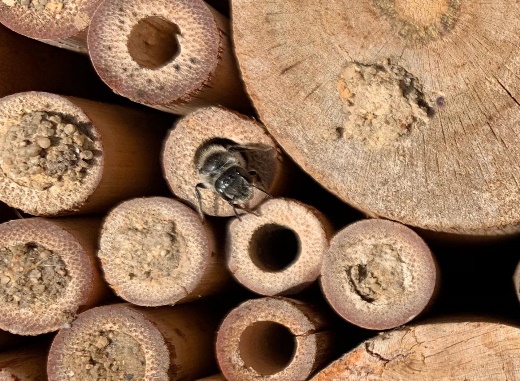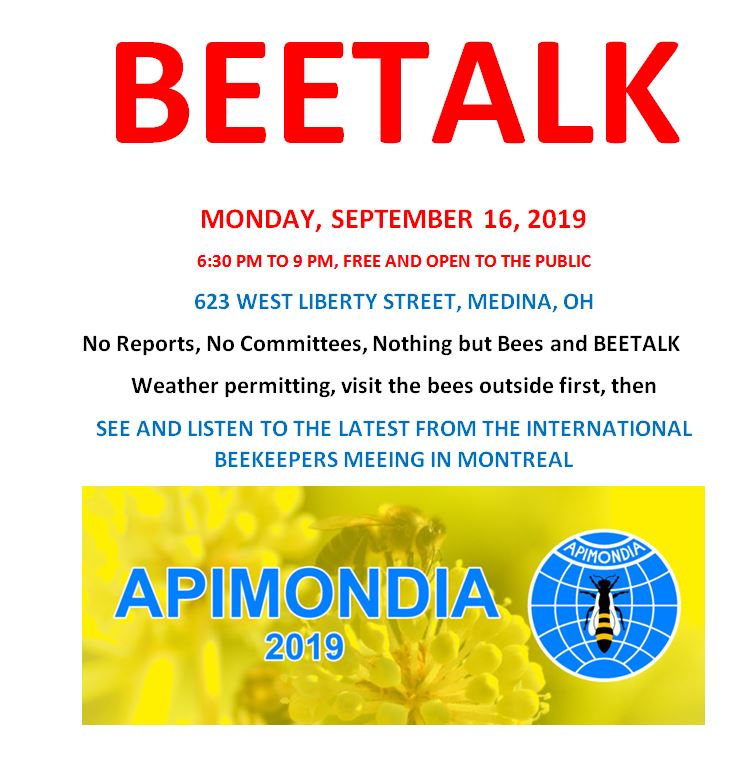University of Würzburg
IMAGE: A solitary bee leaves an artificial nest. The individual breeding chambers are separated and each contains only one larva. This prevents direct contact with sisters or mothers. view more
Credit: (Photo: Alexander Keller / University of Wuerzburg)
An apple plantation in spring. The trees are in full bloom. But to ensure that they also yield in autumn, workers have to do a real fluff job for weeks: each individual flower is manually pollinated with brushes – because there are no bees left to do the job. Not a nice vision of the future. But in some regions of China this is already reality. And the disappearance of the bees is reported all over the world.
The exact reason for the bee mortality is not known. Pesticides from agriculture, destruction of habitats, pathogens – probably several factors play together. A research group at Julius-Maximilians-Universität (JMU) Würzburg in Bavaria, Germany, is now focusing on another factor. It is the bacteria that live in and with bees. Many of them are important for the health of bees. If they suffer, so do the bees.
Many relationships between bees and bacteria
The intestines of honeybees, for example, contain bacteria that help digest food and stimulate the immune system of the insects. The beehive also contains useful microbes, some of which produce antibiotics, thus preventing the spread of harmful fungi.
“Most research in this field is devoted to social bees, especially the western honey bee Apis mellifera,” says Dr. Alexander Keller of the JMU Biocenter. Solitary bees would have experienced only little attention. These are pollinators of great ecological importance for the environment and agriculture. More than 90 percent of the 17,500 bee species known worldwide are solitary bees.
Honeybees only suitable as a model to a limited extent
According to Keller, considerably more research is needed to better understand the relationship between solitary bees and microbes and thus perhaps better combat bee mortality. Many species of solitary bees are threatened or already extinct.
Until now, research has been based on the assumption that the knowledge gained from honey bees can be transferred to solitary bees. However, this is only possible to a very limited extent, despite some fundamental similarities. This is the conclusion reached by the JMU research group in a review article published in the journal “Trends in Microbiology”. It summarises the current state of research on bees and their microbial associations.
The central finding is that solitary bees are much more strongly influenced by environmental factors and human-induced changes than socially organised bees when establishing their relationships with microbes. The consequences of climate change, agricultural changes and habitat degradation, for example, have not yet been clarified and require research specifically adapted to solitary bees.
Alexander Keller and his team are currently working with the JMU Chair of Zoology III (Animal Ecology and Tropical Biology) and international partners to investigate the landscape ecological factors that influence the microbial associations of solitary bees.
______________________________________________________________________________________________________________________________________
Honey Bee Brain Upgrades May Help the Insects find Food.
A honeybee that’s been promoted to forager has upgrades in her nerve cells, too. Vibration-sensing nerve cells, or neurons, are more specialized in bees tasked with finding food compared with younger, inexperienced adult bees, researchers report August 26 in eNeuro.
This neural refinement may help forager bees better sense specific air vibrations produced by their fellow foragers during waggle dances — elaborate routines that share information about food location, distance and quality (SN Online: 1/24/14).
Researchers compared certain neurons in adult bees that had emerged from their cells one to three days earlier to neurons of forager bees, which were older than 10 days. In the foragers, these neurons had more refined shapes, the team found. These vibration-detecting cells, called DL-INT-1 neurons, appear sparser in certain areas, with fewer message-receiving tendrils called dendrites. Refined dendrites may be a sign that these cells are more selective in their connections. And in foragers, these neurons also appear to handle information more efficiently than their counterparts in the young adult bees, experiments with electrodes reveal.
These changes in shape and behavior suggest that in foragers, neurons become adept at decoding vibrations produced by other foragers’ waggle dances, say computational neuroscientist Ajayrama Kumaraswamy of the Ludwig-Maximilians-Universität München in Germany and colleagues. But it’s not clear whether foraging experience in the fields or the passage of time itself prompts these refinements.
Citations
- Kumaraswamy et al. Adaptations during maturation in an identified honeybee interneuron responsive to waggle dance vibration signals. eNeuro. August 26, 2019. doi:10.1523/ENEURO.0454-18.2019.
______________________________________________________________________________________________________________________________________










